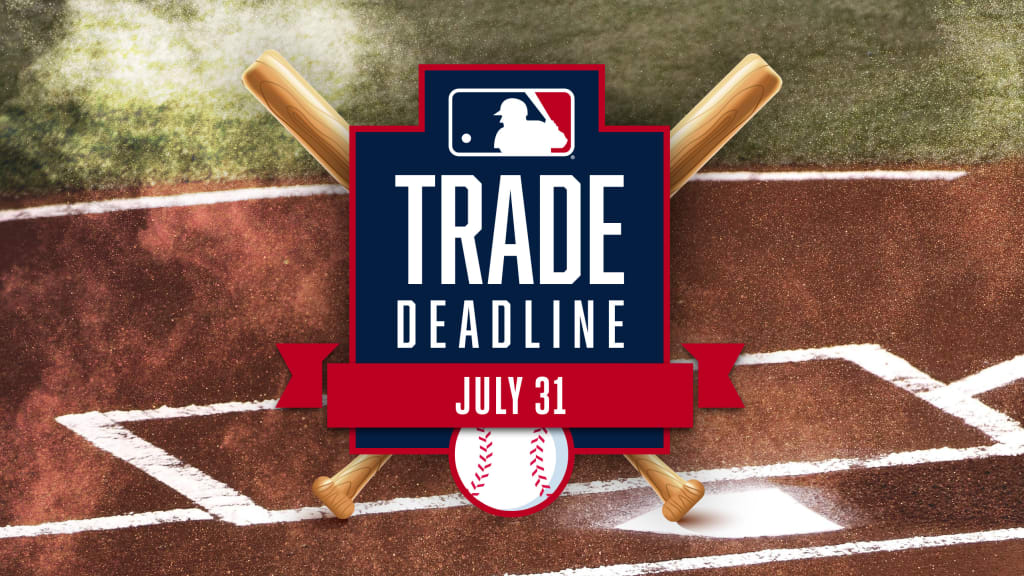
In December, baseball observes the 100th anniversary of one of the most famous transactions in sports history: The sale of Babe Ruth from the Red Sox to the Yankees for $100,000.
Perhaps it’s fitting, then, that rules governing in-season trades have changed this year.
We no longer need to refer to July 31 as the “non-waiver” Trade Deadline. It’s the Trade Deadline, full stop. August deals requiring trade waivers -- like Justin Verlander in 2017 -- won’t be permitted anymore.
To prepare you for a trading season unlike any in baseball's recent history, here are five storylines to watch in the weeks ahead:
1. Prepare for “Trade Deadline Days,” not “Trade Deadline Day.”
Look for significant deals to be finalized in the days preceding the Deadline, in addition to the usual rush of activity in the hours leading up to 4 p.m. ET on July 31.
In past years, late-July conversations could lose steam when general managers told one another, “We’re too far apart, and we’re going to take our chances in August.” That’s no longer an option.
Because two months of trading volume is now condensed into one, both buyers and sellers will be motivated to make final decisions on prospective deals a day or two before the Deadline in order to make sure they have the bandwidth to exhaust every opportunity.
Consequently, bubble teams likely will need to determine their direction -- definitively -- by the conclusion of games on Sunday, July 28. With a relatively light schedule the following day -- only seven games across the Majors -- the final Sunday before the Trade Deadline is a natural benchmark for owners, club presidents and general managers.
2. Sellers are savers.
The nature of trade waivers made August a ripe time in the baseball calendar for the movement of large contracts.
Consider what trade waivers meant. Every time a player was placed on them, his team effectively asked the other 29 clubs, “Do you value this player at this price point?” On occasion, as with Alex Rios’ move from the Blue Jays to the White Sox in 2009, a team discovered that allowing another team to take on a big contract -- for zero return -- was valuable in and of itself.
Under new rules, July is the main in-season clearinghouse for big contracts, creating a built-in advantage for buyers. Contenders can tell the selling GMs, “If you want to save money and improve your team for next year, this is your last, best offer from me to do so.”
In that sense, sellers with a clear need to turn over their roster -- like the Mets -- would do well to act boldly now, rather than wait for the offseason, when they will face greater competition in moving assets.
3. There is new payroll flexibility among buyers.
One inverse of the sellers’ need to act is that buyers have greater spending capability now than in previous seasons, because of the way multiple big-spending clubs have brought their payrolls below the competitive balance tax threshold.
In 2018, only the Red Sox and Nationals paid luxury-tax penalties. Therefore, the Dodgers and Yankees -- among other clubs -- have greater latitude to spend now.
That is especially true, in light of the presumed reason the Dodgers and Yankees were so eager to reset their CBT payroll figure: They wanted to give themselves greater flexibility to sign a free agent like Bryce Harper or Manny Machado. (They didn’t, with A.J. Pollock’s $60 million deal with Los Angeles representing the largest deal either club signed.) The Dodgers also were intrigued by the possibility of signing Southern California native Nolan Arenado in the coming offseason. That’s no longer an option, following Arenado’s extension with the Rockies.
In other words, the Dodgers and Yankees are poised to add payroll -- if they find the right players.
4. Who has a roster spot for Pablo Sandoval (and players like him)?
One time-honored August tradition involved acquiring big-bat, little-or-no-glove pinch-hitters on the eve of the September roster expansion, with the confidence that there would be no angst about how to find a spot for them on their 25-man roster.
Hall of Famer Jim Thome was traded in late August twice -- from the White Sox to the Dodgers in 2009 and Indians to the Twins in '11. The first of those trades wouldn’t be practical under current rules; a National League club like Los Angeles couldn’t reserve a roster spot for an entire month to a dedicated pinch-hitter/designated hitter. (Reminder: Starting in '20, September rosters will only expand to 28, not 40, but that’s a discussion for next year.)
A decade later, a version of that dilemma faces teams intrigued by Sandoval's .895 first-half OPS and history of postseason heroics. In an era of expanded bullpens and short benches, how many contenders -- especially in the NL -- have room for a corner infielder who’s played fewer than 300 defensive innings this year?
We’ll find out soon enough. The Rangers are one possible fit, given their below-average production at both first and third base this year.
5. Exceptions? Well, there are a couple …
You knew this was coming, didn’t you?
It’s incorrect to say there will be no trades in August. Trades are permitted, but only if all players involved are signed to Minor League contracts and not on 40-man rosters. (Under the previous rules, such players did not need to pass through trade waivers in order change teams in August.)
This provision could have particular relevance to backup catchers. Drew Butera, currently at Triple-A with the Rockies, is a good example. He’s played on two postseason teams, and he won a World Series ring with the Royals in 2015. He’s regarded as a superb receiver and excellent clubhouse presence -- attributes that general managers will want if one of their Major League catchers suffers an August injury.
Then again, enterprising GMs could move quickly and pursue Butera (or a similar veteran backup) in July, in order to worry a little less about foul tips over the final two months of the regular season.
